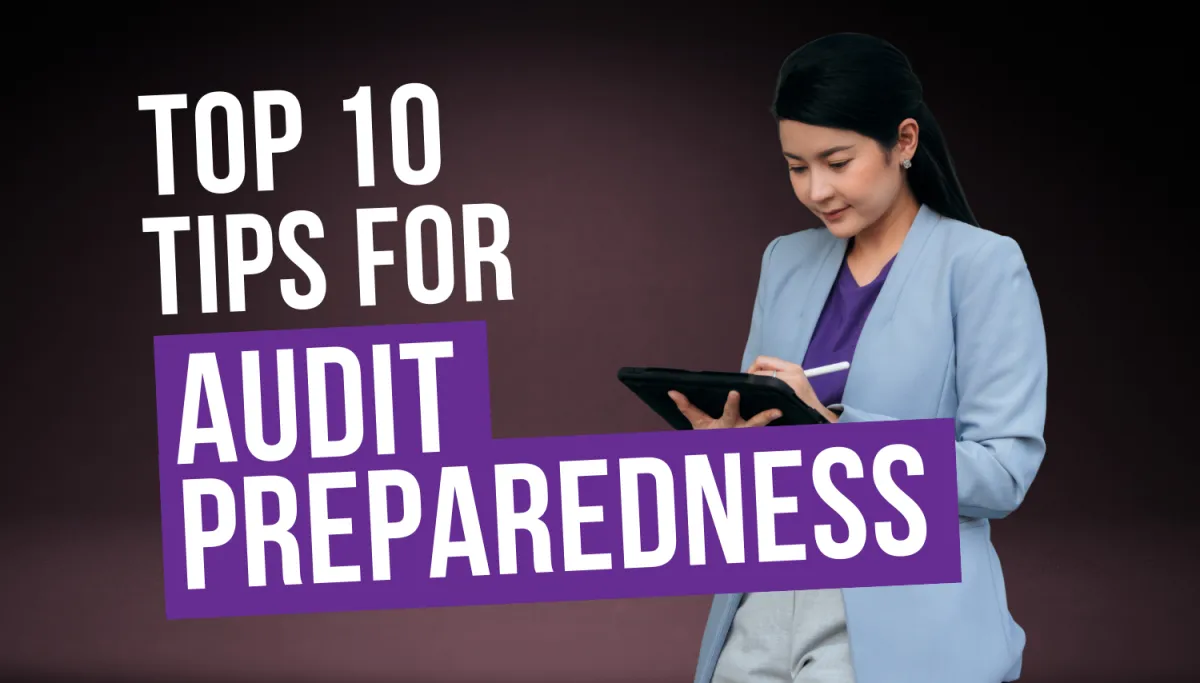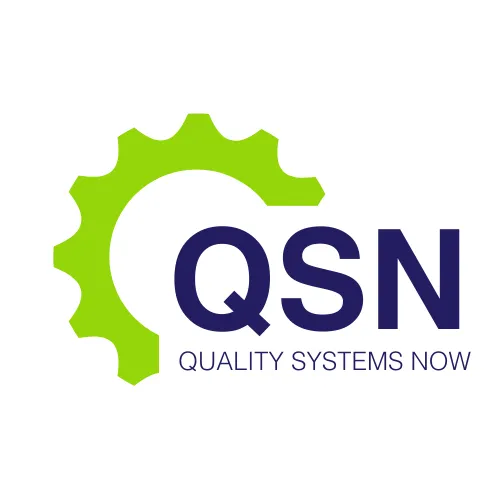LATEST NEWS

Top 10 Tips for Audit Preparedness
Many companies face challenges in keeping up with regulatory changes and ensuring their internal processes meet the high standards set by governing bodies. This is where audit preparedness comes into play. By implementing effective strategies, companies can be ready for an audit at any time, ensuring their compliance and enhancing operational efficiency. Below are the top 10 tips for audit preparedness that can make a significant difference in your approach to audits and regulatory inspections.
Free to use Regulatory Compliance Readiness Scorecard
1. Perform Regular Internal Audits
The first step in audit preparedness is performing internal audits. These audits are designed to identify potential compliance gaps, inconsistencies, and areas of risk before they become a problem. Regular internal audits allow you to assess the current state of your processes, documents, and systems. Conducting mock audits that simulate real inspection scenarios can help staff feel more comfortable and confident when the actual audit takes place.
Internal audits should be thorough and involve all key departments involved in compliance, from manufacturing and quality control to regulatory affairs and documentation management. If any gaps are identified during these audits, address them immediately to ensure you’re always audit-ready.
2. Maintain Accurate and Up-to-Date Documentation
Documentation plays a vital role in the audit process, and regulators will scrutinize every document during an audit. Ensuring that all documents, such as Standard Operating Procedures (SOPs), batch records, and quality control reports, are accurate, complete, and up-to-date is essential. Disorganized or outdated documentation can lead to compliance issues, delays, or even failed audits.
In addition to ensuring the accuracy of your documents, make sure they are easily accessible. Digital document management systems are a great way to keep records organized and ready for inspection at any time. Proper labeling and filing conventions will help you quickly locate documents and prevent unnecessary delays during an audit.
3. Involve the Entire Organization in Audit Readiness
Audit readiness should not be solely the responsibility of the quality assurance (QA) team. Instead, it should be a company-wide initiative. Every department, from research and development to sales and customer service, must understand their role in ensuring compliance.
By engaging the entire organization in audit preparation, you can build a culture of compliance where everyone is aware of their responsibilities. Hold training sessions, provide clear guidelines, and make sure each department knows what they need to do to ensure a successful audit outcome.
4. Identify and Address Compliance Gaps Early
Identifying compliance gaps before the inspectors arrive is crucial. Compliance gaps, whether minor or significant, can lead to penalties, corrective actions, or even product recalls. It’s essential to regularly assess all areas of your operations to identify potential weaknesses and areas for improvement.
Implementing a comprehensive compliance management system can help monitor ongoing performance and flag areas of concern. Early identification allows you to address issues proactively, ensuring your organization is in the best possible position when the audit comes.
5. Standardize Processes and Procedures
One of the key factors that auditors look for during inspections is consistency in processes. Standardized operating procedures (SOPs) are the backbone of compliance, as they ensure that all employees follow the same processes and meet regulatory standards.
Ensure that your SOPs are clearly written, easily accessible, and regularly reviewed. Any changes in regulations should be reflected in updated procedures. Additionally, make sure that employees are trained on these procedures and understand the importance of following them precisely.
6. Implement Corrective and Preventive Actions (CAPA)
Corrective and preventive actions (CAPA) are crucial for addressing non-conformities and ensuring they don’t occur again. CAPA systems help organizations identify the root cause of problems, implement corrective measures, and establish preventive actions to avoid recurrence.
Establish a robust CAPA system and ensure that all employees are trained to recognize issues and initiate corrective actions when needed. Having a clear and documented CAPA process in place demonstrates your commitment to continuous improvement, which is a key component of audit preparedness.
7. Ensure Training and Competency of Personnel
Audit preparedness is only as strong as the team executing it. It’s essential to provide regular training to your staff, ensuring they are competent in their roles and understand the regulatory requirements relevant to their work. Training should be a continuous process, not a one-time event, to ensure that employees remain current with any changes in regulatory standards and company procedures.
During an audit, auditors will often ask employees questions to gauge their understanding of processes and procedures. Properly trained staff members can confidently answer questions, which will help maintain a smooth audit process.
8. Develop a Crisis Management Plan for Audits
While thorough preparation can mitigate many challenges, it’s still important to be ready for unexpected situations. A crisis management plan specific to audits can help your team respond effectively to any issues that may arise during an inspection. This plan should include steps for addressing non-conformities or deficiencies discovered during the audit, as well as guidelines for communicating with auditors.
Having a well-defined crisis management plan ensures that everyone knows what to do if something goes wrong and can minimize disruptions during the audit process. This level of preparedness helps instill confidence among your team and reduces the impact of potential audit findings.
9. Ensure Effective Communication During the Audit
Effective communication is crucial during an audit. Clear, transparent communication with the audit team helps maintain a professional relationship and fosters an environment of trust. Appoint a dedicated point of contact for auditors, who can coordinate responses, provide requested documents, and facilitate the flow of information.
Maintain a calm, respectful, and cooperative demeanor during the audit. Auditors are there to ensure compliance, and fostering a positive relationship can contribute to a smoother, more successful audit outcome.
10. Review and Learn from Past Audits
Once an audit is complete, conduct a post-audit review to assess what went well and what could be improved. Review any findings, corrective actions, and overall audit performance. This is a valuable opportunity to learn from past experiences and improve your preparedness for future audits.
Document lessons learned and implement improvements where necessary to continuously enhance your audit readiness. Incorporating feedback from audits into your ongoing processes will help you stay ahead of potential compliance issues and reinforce your organization’s commitment to quality.
Start Your Compliance Assessment Here
Audit preparedness is a critical aspect of maintaining compliance in the pharmaceutical, medical device, and biotech industries. By implementing these top 10 tips, you can ensure that your organization is always ready for an audit, reducing stress and minimizing the risk of non-compliance. Regular internal audits, proper documentation, training, and a proactive approach to identifying and addressing compliance gaps will help you stay audit-ready at all times.
To assess your current compliance status and identify areas for improvement, consider using a Regulatory Compliance Readiness Scorecard. It takes just a few minutes to complete and provides valuable insights into where your organization stands and how you can strengthen your audit preparedness.
With these strategies in place, your organization will be well-prepared to handle any regulatory inspection and continue operating at the highest standards of compliance.
